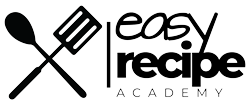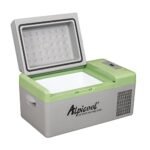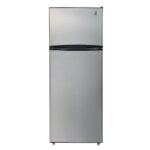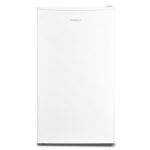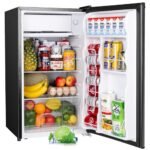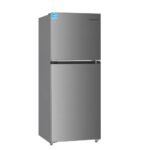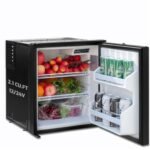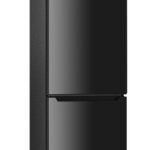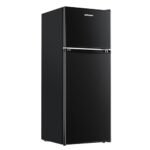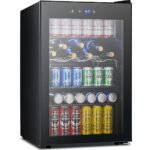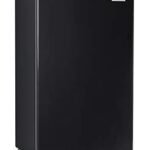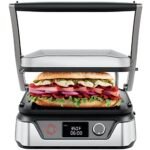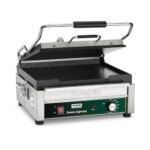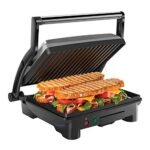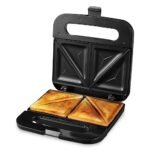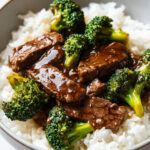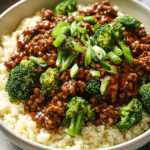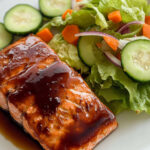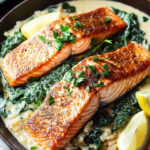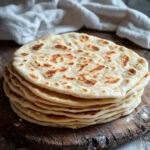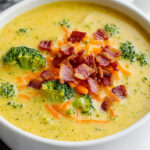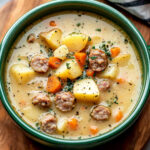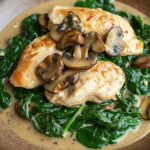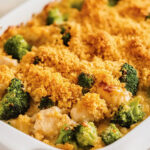Meal prepping can be a game-changer for anyone looking to save time and eat healthier. I’ve found that having a week’s worth of delicious, ready-to-go lunches not only cuts down on the daily stress of deciding what to eat but also helps me stick to my nutritional goals. Whether you’re a busy professional, a student, or just someone who loves to stay organized, good meal prep can make your life so much easier.
In this article, I’ll share my top 10 meal prep lunch ideas that are both tasty and easy to prepare. From protein-packed salads to hearty grain bowls, these recipes will keep you energized and satisfied throughout the week. So, let’s dive in and discover how you can transform your lunch routine with these simple yet delicious meal prep ideas.
What Is Meal Prepping?
Meal prepping involves preparing meals or meal components in advance, usually for several days. This strategy helps manage portion sizes, save time, and reduce food waste. It includes cooking entire meals or prepping individual ingredients to assemble later.
Key elements of meal prepping:
- Batch Cooking: I prepare large quantities of a specific recipe, then divide it into portions.
- Ingredient Prep: Chopping vegetables, cooking grains, and portioning protein sources.
- Storage Solutions: Using airtight containers to keep meals fresh for up to a week.
Meal prepping lets me maintain a balanced diet by planning nutrient-rich meals. I avoid quick, unhealthy fast-food choices during busy weekdays.
Benefits Of Meal Prepping
Meal prepping offers several key benefits, enhancing both convenience and health.
Time Savings
Having pre-prepared meals saves significant time during busy weekdays. Without the need to cook daily, you can focus on other priorities. According to a survey by the Food Marketing Institute, 40% of adults reported that meal prepping reduces stress related to daily cooking.
Healthier Eating Habits
Meal prepping promotes healthier eating habits by controlling portion sizes and ensuring balanced nutrition. A study by the International Journal of Behavioral Nutrition and Physical Activity found that people who meal prep eat more fruits, vegetables, and nutrient-dense foods compared to those who do not.
Reduced Food Waste
Planning and preparing meals in advance leads to less food waste. By using ingredients before they spoil, you contribute to a more sustainable lifestyle. The USDA estimates that 30-40% of the food supply in the US is wasted, indicating the importance of practices like meal prepping.
Cost Efficiency
Meal prepping helps save money by reducing the need for takeout or convenience foods. Cooking in bulk and buying ingredients in larger quantities often result in lower expenses per meal. A consumer report by the American Journal of Public Health showed that families who meal prep save up to $200 per month on groceries.
Stress Reduction
By having prepared meals on hand, daily stress and decision fatigue decrease. There’s no need to worry about what to cook or if you’ll have time to prepare a healthy meal. The consistent structure provided by meal prepping leads to a calmer, more organized daily routine.
Customizable Meals
With meal prepping, you customize your meals to fit dietary needs and flavor preferences. Whether you’re following a specific diet or simply want variety, prepping allows for personal adjustments to each meal.
Consistent Nutritional Intake
Meal prepping ensures consistent nutritional intake throughout the week. Monitoring macronutrients and micronutrients becomes easier, supporting overall health goals. Studies by the Academy of Nutrition and Dietetics confirm that consistent meal patterns lead to better health outcomes.
Enhanced Cooking Skills
Regularly preparing meals enhances cooking skills and confidence in the kitchen. Experimenting with new recipes and techniques fosters culinary creativity, improving overall cooking proficiency.
Greater Variety
Prepping meals in advance encourages trying new recipes and ingredients. This practice diversifies your diet, preventing mealtime boredom and promoting a balanced intake of various nutrients.
Portion Control
Meal prepping allows for precise portion control, contributing to weight management and avoiding overeating. A research article in the Journal of Obesity highlights that portion control is a primary factor in successful weight loss and maintenance.
By understanding and incorporating these benefits, you can enhance your meal prep strategy and enjoy varied, nutritious lunches throughout the week.
Tips For Successful Meal Prep
Effective meal prep boosts daily efficiency and nutrition. Follow these tips for optimal results.
Plan Ahead
Create a detailed meal plan before starting. Decide on recipes, list all ingredients, and set aside dedicated prep time. Use this approach to simplify shopping and reduce grocery trips. Check your pantry for items you already have, focusing on fresh produce and high-protein options like chicken, beans, and quinoa. Opt for recipes you enjoy to ensure variety and satisfaction.
Invest In Quality Containers
Purchase high-quality containers to keep meals fresh and organized. Opt for BPA-free plastic, glass, or stainless steel options with tight-sealing lids. Look for varying sizes for proper portion control and ease of storage. Containers should be microwave and dishwasher-safe to streamline heating and cleaning. Label containers with dates and meal names to avoid confusion and waste. Quality storage maintains flavor and reduces spoilage.
10 Best Meal Prep Lunch Ideas
I’ve been meal prepping for years, and these ideas have consistently made my lunches flavorful, nutritious, and easy to prepare. Each meal idea includes healthy ingredients and helps maintain variety throughout the week.
1. Chicken and Veggie Stir-Fry
Chicken and veggie stir-fry balances protein and vegetables. I marinate chicken breast with soy sauce and garlic, then stir-fry it with broccoli, bell peppers, and snap peas. This dish stays fresh for four days in an airtight container.
2. Quinoa Salad with Black Beans and Corn
Quinoa salad with black beans and corn is a nutrient-dense choice. I cook quinoa, mix it with black beans, corn, bell peppers, and add a lime-cilantro vinaigrette. It provides fiber, protein, and essential vitamins, making it a perfect lunch option.
3. Turkey and Greek Yogurt Wrap
Turkey and Greek yogurt wrap offers a lean protein boost. I spread whole-grain tortillas with Greek yogurt, add turkey slices, lettuce, tomato, and cucumber. These wraps are easy to assemble and store well for three days.
4. Lentil Soup
Lentil soup keeps me warm and satisfied. I cook lentils with onions, carrots, celery, and tomatoes in vegetable broth. This hearty soup is rich in plant-based protein and fiber, ideal for batch cooking and freezing.
5. Tuna Salad with Crackers
Tuna salad with crackers is a quick and balanced meal. I mix canned tuna with Greek yogurt, celery, red onion, and mustard. Paired with whole-grain crackers, it’s a convenient lunch packed with omega-3 fatty acids.
6. Beef and Broccoli Rice Bowl
Beef and broccoli rice bowl combines savory and nutritious elements. I stir-fry beef strips with broccoli and garlic, serving it over brown rice. This meal provides iron, fiber, and vitamins, staying fresh for four days.
7. Veggie-Packed Hummus Wrap
Veggie-packed hummus wrap is a nutrient-rich vegetarian option. I spread hummus on a whole-grain tortilla, layer with spinach, shredded carrots, cucumbers, and bell peppers. These wraps are easy to prepare and perfect for meal prep.
8. Egg and Avocado Sandwich
Egg and avocado sandwich is a satisfying and nutritious lunch. I mash avocado on whole-grain bread, top with hard-boiled egg slices, and sprinkle with salt and pepper. This meal is simple to make and rich in healthy fats and protein.
9. Chickpea and Spinach Curry
Chickpea and spinach curry offers a flavorful and filling dish. I simmer chickpeas and spinach in a tomato-based curry sauce with spices like cumin and coriander. This meal is high in protein and fiber, staying fresh for four days when stored properly.
10. Shrimp and Asparagus Stir-Fry
Shrimp and asparagus stir-fry combines lean protein and vegetables. I sauté shrimp with asparagus, garlic, and ginger, serving it over quinoa. This dish provides essential nutrients and keeps well in the fridge for three days.
How To Store And Reheat Meal Preps
Proper storage and reheating are critical for maintaining meal quality. Improper methods can result in soggy or overcooked meals. Follow these tips to keep meal preps fresh and delicious.
Storage Containers
Use airtight containers to store meals. Opt for BPA-free plastic, glass, or stainless steel options. Ensure the lids seal tightly to preserve freshness and prevent leaks. Examples include brands like Pyrex (glass) and Snapware (plastic).
Storing Meals
Refrigerate meals that you’ll eat within 3-4 days. For longer storage, freeze meals to maintain flavor and texture. Label containers with dates and meal names to track freshness and avoid confusion.
Refrigeration Guidelines
Keep meals in the refrigerator at or below 40°F (4°C). Use the coldest sections, typically the back or bottom shelves, for optimal storage. Consume refrigerated preps within four days to ensure safety and quality.
Freezing Guidelines
Freeze meals at 0°F (-18°C) or lower. Use containers or freezer bags that are freezer-safe to prevent freezer burn. Thaw frozen meals in the refrigerator overnight before reheating to maintain texture and flavor.
Reheating Methods
Choose the best method to reheat meals for taste retention.
- Microwave: Use medium heat settings to avoid overcooking and drying out food. Stir halfway through heating for even warmth.
- Oven: Reheat meals at 350°F (175°C) for about 20 minutes. Use an oven-safe dish and cover with foil to prevent drying.
- Stovetop: For stir-fries or soups, reheat in a skillet or pot over medium heat, stirring frequently until evenly warm.
Reheating Tips
Add a splash of water or broth when reheating rice, pasta, or grains to restore moisture. Stir meals halfway through reheating for uniform temperature. Use a food thermometer to ensure meats and poultry reach at least 165°F (75°C).
Storing and reheating meals properly ensures your meal preps stay tasty and safe. Following these guidelines can help preserve the flavor and texture, making your meals enjoyable throughout the week.
Conclusion
Meal prepping has truly transformed my lunch routine and overall approach to eating. By dedicating a bit of time each week to prepare meals in advance, I’ve found that I can enjoy delicious, nutritious lunches without the daily hassle. Not only has this habit saved me time and money, but it’s also helped me maintain a balanced diet and reduce food waste.
The variety in my meal prep options keeps things interesting and ensures I never get bored. With these 10 best meal prep lunch ideas, you can easily enhance your lunch game and enjoy the benefits of a well-organized, health-conscious lifestyle. Happy prepping!
